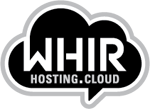How to Prevent AWS, Azure or Google from Eating your Lunch? Work with ThemHow to Prevent AWS, Azure or Google from Eating your Lunch? Work with Them
Many service providers feel like the big guys (Amazon, Google and Microsoft) are a threat. The question is what can you do about it?
September 23, 2014


logo-WHIR
This article originally appeared at The WHIR
Many service providers feel like the big guys (Amazon, Google and Microsoft) are a threat. The question is what can you do about it? Do you work with them or compete against them, possibly using a federated approach?
One example in the hosting industry of a cloud federation is OnApp. OnApp has championed that service providers need to band together versus Amazon and others. It believes that federation is the answer to cloud computing, similar to Uber for transportation or Airbnb for accommodations.
Is federation the answer?
Federation isn’t a growth strategy for service providers or a model like Airbnb. Instead we believe its only valid use case is as a short term approach to using spare capacity. Federation will lead to commoditization because you are only able to compete at the lowest level: the infrastructure itself. The spare capacity is likely to be the capacity the service provider can’t utilize so it may be the least cost effective. The opportunity is what you put on top of the infrastructure, how you add value through additional services, applications and functionality. Differentiation is at the heart of this and where service providers can, and will, compete.
OnApp made an interesting purchase with SolusVM, adding the IaaS platform to its user base and platform. Federated cloud based on pooling unused capacity is an interesting model, but is it the answer or just a part of the industry consolidation process?
Let’s assume you accept that this is going to happen, do you join the OnApp Federation and extend your business a little or move where the market will ultimately go? There are many things to like about OnApp. I feel it would be more compelling if it supported the large cloud vendors, however that wouldn’t suit why many people joined. Many like the idea of selling excess capacity, however if most people are sellers then ultimately there is a lack of demand.
David Myer from Gigaom explains this well in his latest article, “OnApp buys Solusvm to boost the demand side of its federated marketplace”:
London-based OnApp has had an interesting history. It started off providing software for ISPs and old-school hosting outfits to start offering cloud services. Once it had over a thousand of these companies on board, it started federating their spare content delivery network (CDN), storage and compute capacity – first so that they could supply each other through an internal marketplace, and then so they could supply cloud customers through OnApp portals like CDN.net and Cloud.net and through other new virtual service providers.
Problem is, there’s more spare capacity on offer than the other providers in the federation want, and no pure-play virtual service providers have popped up yet. “We’ve got oodles of supply in the marketplace and we’ve got some demand,” OnApp CEO Ditlev Bredahl told me. “We do around 1,000 buys and sells a week in the marketplace, but to be honest I was hoping to do about 10,000 by now.”
However, according to OnApp, most of these providers focus their efforts on squeezing what they can out of their own capacity before trying to buy in more through the marketplace.
We don’t believe that most service providers will put excess capacity into the marketplace at fire sale prices like an airline does to fill empty seats on a plane. There is little evidence to support this direction currently.
HyperScale vendor’s strategies for growth
Here are some of the hyperScale vendor’s strategies for growth and winning key markets:
1. Google
Google is offering early-stage startups that meet certain criteria $100,000 worth of services available on the Google Cloud Platform, which includes everything from Infrastructure and Platform-as-a-Service to Database-as-a-Service and APIs for a handful of application services.
2. AWS has a Spot Market Price for Cloud Services
The spot could be at an 80 percent plus discount to the regular price and is based an AWS offering spare capacity to the spot market. This is very similar to the airline industry. Given AWS’s superior ability to manage big data they are ideally placed to price and manage this, as would Google or Microsoft.
3. Microsoft Azure
Microsoft uses term Software License contracts and bundles of Azure to achieve huge discounts for customers.
Can you build a good business with one or more of the hyperscale partners?
All these vendors need partners to provide consulting, services, add-ons, API integrations and much more.
If you understand the cloud vendor’s strategy and it is well articulated in the market, then you can build a good business working with them.
Here’s a checklist of what to look for from a good cloud vendor partner:
Do they understand what they both do best? Is this well articulated in the market?
Do they value partners or really only value end user customers?
Do they provide a roadmap or guidelines on future product offerings?
Do they provide an API for all their services?
Do they allow you to manage billing either directly or via API?
Can you earn a margin for reselling their services?
How is channel conflict managed?
Is there a co-operative marketing program?
Are there programs to utilize services “in-house” at special rates?
Are there programs to teach you how to make money selling their services?
If you feel that that the majority of these are answered positively, it is likely you can build a good business with one or more of the hyperscale partners.
Craig Deveson can be reached at Cloud Manager Twitter email
This article originally appeared at: http://www.thewhir.com/blog/prevent-aws-azure-google-eating-lunch-work
About the Author
You May Also Like







